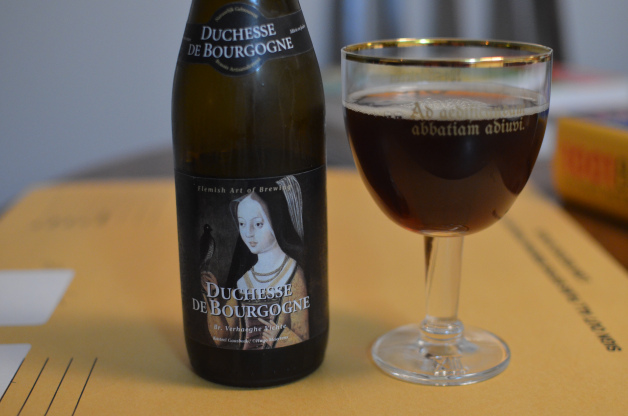
by Judy Esguerra | May 18, 2015 | Lock Box: May 2015, The Lock Box
6.2% ABV | Flanders Red Ale | 330ml | Brouwerij Verhaeghe | Belgium When enjoying craft beer, it’s easy to get caught up in the modernity of it. Flashy, streamlined brewing powerhouses built by scrappy brewers dot the landscape and have become our go-to places to get our brew fix. Founded through thoroughly contemporary methods like Kickstarter and brewing with the most state-of-the-art equipment, few things as “hip” as today’s craft movement. So, with all the flash and glamor, it’s not tough to forget beer’s roots, where beer was made with humble equipment by families and their beloved recipes. But, as it turns out, some of these roots are alive and well, and were shaping the independent brew scene before modern brewers even had a dial-up connection. One of these legacy breweries is Brouwerij Verhaeghe, a small family-run brewery that creates some of the world’s most beloved beers. Located in West Flanders, Brouwerij Verhaeghe opened up shop in 1885, survived two World Wars (even after being dismantled by the Germans in World War I), and went on to become an institution to not only the locals but the beer-drinking world beyond. Their adage is “a little less but better” – meaning that they don’t have the sprawling tap list of many modern breweries, but what they do make, they make with the utmost care. That includes one of the most cherished beers of all time – Duchesse De Bourgogne (it has its own Wikipedia page! How many beers can say that?). Duchesse De Bourgogne is a Flanders Red Ale one of the iconic beer specialties of the region. What differentiates the style...
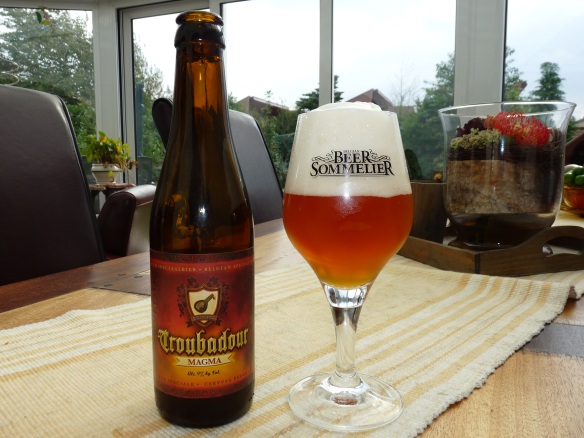
by Judy Esguerra | May 18, 2015 | Lock Box: May 2015, The Lock Box
9.0% ABV | Belgian IPA | 330ml | The Musketeers Brewing | Belgium Few beer varieties bridge the flavors and profiles of different regional beer stylings quite like a Belgian IPA. This little hybrid oddball is the best of both worlds, as though an IPA and a Beglian trippel had little beer babies. And it’s an adorable little bugger. Between the formidable floral and bitter wallop of the hop profile to the fruity, caramelly charisma of the Belgian yeast, this identity crisis of a beer is certainly a clash of cultures. Of course, which culture it’s clashing with largely depends on its hop character, but that adds to the fun and makes this style one of the most versatile out there. Do we have the earthy, herby profile of European hops? Or the floral, resiny impact of their American brothers? In the case of the Troubador Magma, it’s most certainly the latter, but we’ll get back to that in a moment. Let’s talk about where Magma comes from – an impressive little band of 4 brewers that calls themselves, fittingly enough, The Musketeers. Located in Ursel, Belgium and debuting in 2000, The Musketeer Brewing is the brainchild of 4 brewing engineers (brewgineer?) – recent graduates an acclaimed brewing program in Flanders. Graduating from unreliable batches of wonky experiments to refined and gorgeous offerings in a blazingly short period of time, the combined efforts of these 4 gentlemen came to represent some of the best beers offered by modern Belgium. Their goal, they claim, is to “extend the rich brewing traditions of Belgium not only to the citizens of Belgium,...
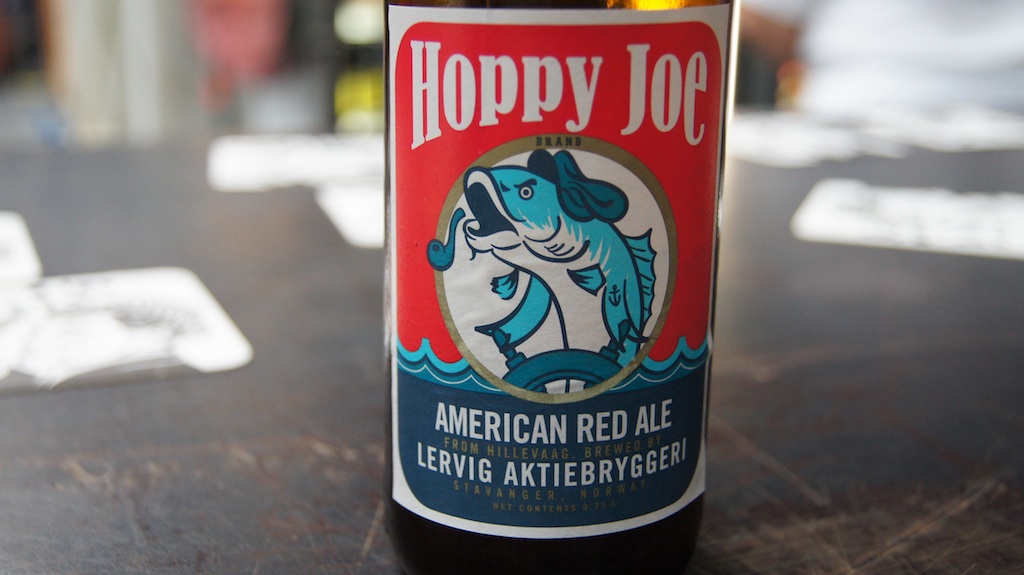
by Judy Esguerra | May 18, 2015 | Lock Box: May 2015, The Lock Box
4.7% ABV | American Red Ale | 330ml | Lervig Aktiebryggeri | Norway We’re returning to Northern Europe once again to revisit our friends at Lervig, of Stavanger, Norway, one of the relatively few dedicated breweries to set-up shop in the region. Still, Lervig is more than happy to take up the mantle of establishing new life in the local beer scene. The brewery was established in 2003, born of the same stuff many craft breweries are: a challengingly small number of people with a big passion for quality beer. A favorite adage of the brewery is “a real city has a cathedral, a football team…and a local brewery,” so when the brewery moved their operations there in 2005, Stavanger finally completed its list and became a real city. With each year that followed, Lervig added a layer of sophistication to its operation – their first bottling and boxing lines have been in place since 2007 – while still running lean with a concise 18-person team. It’s a formula that works well for them, and they’ve become a favorite in the region and the beer-loving world beyond. You may remember this brewery from their collaboration with Edge Brewing in Barcelona. But with this beer- Hoppy Joe – Lervig has taken the lead, and has crafted a pleasant, approachable Red Ale that’s appropriate pretty much wherever a beer is required. Lervig’s Hoppy Joe pours a dark copper and features all of the best beer notes in perfect balance: fruity hops, caramel sweetness, and a bit of a bitter finish. Hoppy Joe is a self-proclaimed “American-style” Red Ale, meaning, like its name would...
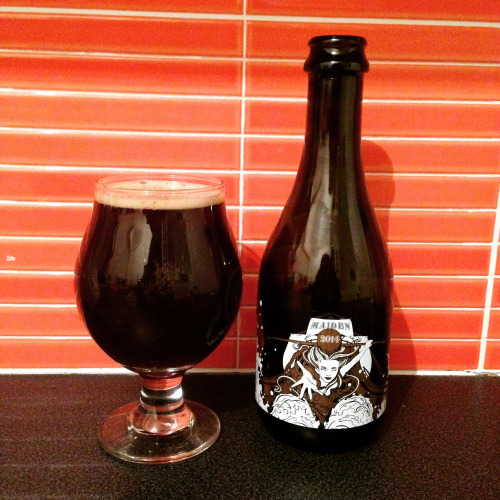
by Judy Esguerra | May 8, 2015 | The Vault Reserve, Vault Reserve: May 2015
11.1% ABV | Barrel Aged Barley Wine | 375ml | Siren Craft Brew | Berkshire, England Of all of the techniques and tools available in a brewer’s deck, barrel aging absolutely has to be one of their favorite cards to play. Barrel aging is the current darling of the modern craft brewing age, and it’s easy to see why – it’s an (almost) sure-fire way to add a layer of sophistication to (almost) any beer. Why almost? Well, there are some caveats to this whole barrel-aging thing. The process certainly amounts to more than throwing some beer into a barrel and waiting a while as you hope for the best: for one, the whole process can go a bit rouge. Most barrels are home to an entire menagerie of micro-fauna that, if left unchecked, can completely derail the intentions a brewer had for a beer by imparting some very unique flavors that quickly take the forefront. In fact, sometimes their presence is welcomed, or even coveted, but we’ll save that topic for another day. The other big aspect of barrel aging is selecting exactly which barrel will be utilized for the process. Any number of second-run barrels (that is, a barrel that was used in the fermenting/production of another wine or spirit) can have a huge impact on the flavor of the innate beer. Do we go with the elegant richness lent to us by a cabernet barrel? Or the sweet woodiness of a bourbon barrel? Maybe a combination of both? That latter question is a favorite for breweries like Siren of Wokingham to puzzle out. For the 2014 edition of...
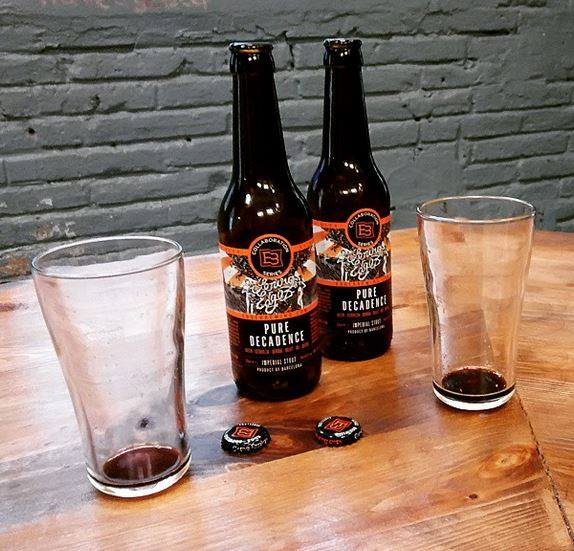
by Judy Esguerra | May 8, 2015 | The Vault Reserve, Vault Reserve: May 2015
10.3% ABV| Imperial Stout | 330ml | Edge Brewing Collab with Lervig Brewing | Barcelona, Spain For every reach of the globe that revels in craft beer, there’s another stubborn little part of the world that, for whatever reason, doesn’t really get it. These beer deserts can spring up for any number of reasons – whether it be the iron grip wine or some other local spirit has on the region, or the complacency of a people who are completely ok with drinking the same mass-produced lager that has been a part of their culture for decades. Sometimes the notion of craft beer just doesn’t stick. And that’s ok. Of course, you don’t have to agree. Just ask Edge Brewing, whose founders “were so eager to bring the American craft beer revolution to Europe that they brought a brewery.” Edge Brewing, founded in 2013, is the spirit of American craft brewing, only in Barcelona. Alan Sheppard, Edge Brewing’s Head Brewer, sought to burst Spain’s vaguely anti-craft beer barrier with an injection of the phenomenon that is so beloved elsewhere. Sourcing everything from the water treatment equipment to the yeast from San Diego, California (the birthplace of the American craft brew scene and sort of Beer Mecca for craft beer lovers everywhere), the team at Edge Brewing is the epitome of American craft, only in a European metropolis. For this particular offering from Edge Brewing, a deviantly dark Imperial Stout they have aptly entitled Pure Decadence, they partnered with Lervig brewing of Norway. This beer came out of a friendship between the two brewers and quite a few flights to...






